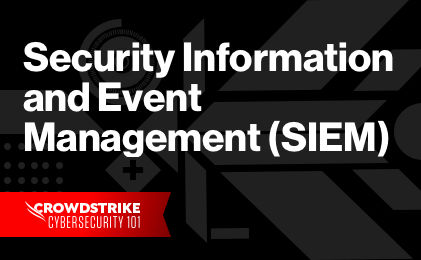Master CNAPPs for Superior Cloud Security
Master CNAPPs for Superior Cloud Security
As cybersecurity threats intensify, the volume and complexity of data that organizations need to process have grown exponentially. This data, encompassing both structured and unstructured forms, is vital for threat detection and response. Traditional management systems have proven inadequate for handling this surge, leading to the advent of the security data lake. This innovation represents a pivotal development in cybersecurity, offering a centralized repository capable of efficiently storing, managing, and analyzing diverse security data, thereby addressing the critical challenges posed by the data deluge.
In this post, we’ll cover what a security data lake is. We’ll look at its relationship to legacy security information and event management (SIEM) systems. Then, we’ll explore how next-gen SIEM systems address the same challenges that security data lakes sought to address but bring additional advantages.
What is a security data lake?
A data lake is a scalable, centralized repository of structured and unstructured data. Designed to overcome the poor scalability and performance and high cost of traditional data warehouses, a data lake allows organizations to collect massive volumes of data without needing to structure all their data or build ever-increasing indexes and relationships between different data sources. It provides a flexible, affordable way for organizations to collect machine data and apply machine learning and analytics to data to derive business value. .
A security data lake is a data lake that enables organizations to store, manage, and analyze security-related data at any scale. By focusing on security data and threat intelligence, the security data lake enables organizations to process and utilize data for threat detection and response more effectively. It offers high-speed search for investigations, AI-based analytics, threat hunting, and data retention for compliance.
The introduction of security data lakes brought several key benefits to the cybersecurity domain, helping to streamline operations and enhance organizations’ security postures. These benefits include:
- Scalability and flexibility in data handling: The security data lake accommodates growing data volumes with ease, adapting to the needs of an organization.
- Visibility and data integration from multiple sources: The security data lake offers a holistic view of security data, consolidating information from diverse sources into one accessible location.
- Cost-effectiveness for long-term data storage: Additionally, the security data lake reduces expenses related to data storage and management, making it a financially viable option for organizations.
In part, the security data lake emerged in response to limitations from legacy SIEM solutions. Let’s look at the relationship between these two technologies.
Legacy SIEM and the security data lake
In traditional cybersecurity, SIEM systems are an integral part of an organization’s defense arsenal. SIEM is designed for real-time monitoring, logging, and incident management; it analyzes data from various sources to flag potential threats. By structuring data into predefined schemas, a SIEM tool offers actionable insights through real-time analysis and historical data examination.
The limitations of legacy SIEM
However, with the surge in security data volume, the limitations of traditional (legacy) SIEM systems became apparent. They struggled to scale effectively and faced significant challenges when trying to manage the sheer volume of security data, particularly when it involved unstructured data. Legacy SIEM systems suffered degraded performance, leading to slower query response times and the potential to miss critical threats.
The emergence of security data lakes
To address these limitations, security data lakes emerged, meeting the need for a scalable, centralized repository for all security data. They offered hot storage access, ensuring data is readily available for quick analysis. They also integrated with other cybersecurity tools to help enhance threat detection and incident management.
The downside of security data lakes
However, by moving away from SIEM systems to security data lakes, organizations separated security data management from security operations. The security data lake served as a Band-Aid to address the limitations of legacy SIEM, but it wasn’t a comprehensive end-all solution. Separating security data management from security tool integration creates gaps in the seamless operation of threat detection and response. This separation can lead to inefficiencies, as businesses may find themselves navigating between disparate systems to correlate data and insights effectively.
The optimal solution couples the integrated nature of SIEM with high-performance security data storage and management. This brings us to next-gen SIEM.
Next-gen SIEM as the solution to the data problem
Security data lakes emerged in response to the limitations and high costs of legacy SIEM systems, driven by the increasing volume of security data.
Next-gen SIEM solutions address the challenges of legacy SIEM by eliminating the need for separate data lakes. Key advantages of next-gen SIEM include:
- Scalability: Next-gen SIEM adapts to growing data volumes with ease.
- Search performance: Next-gen SIEM solutions offer fast and efficient data retrieval.
- Affordable cost: Next-gen SIEM reduces the total cost of ownership compared to traditional models.
Next-gen SIEM also introduces features like enhanced threat detection, workflow automation, and comprehensive investigation and response tools, which are all accessible within a single platform. This integrated approach simplifies security operations, providing a cohesive and efficient solution for modern cybersecurity needs.
Cover all your security data with Falcon Next-Gen SIEM
Security data lakes emerged to tackle the scalability and data management issues of legacy SIEM, offering a centralized place for the vast volumes of security data organizations generate. They were designed to handle the increasing amount and complexity of data, providing a solution to the problems that legacy SIEM systems struggled with.
CrowdStrike Falcon® Next-Gen SIEM further advances this concept by fully integrating high-volume data storage and analysis capabilities with the industry-leading threat detection, investigation, and response features of the CrowdStrike Falcon® platform, extended to all data sources. It delivers scalability, enhanced search performance, and cost efficiency — all without separating data tooling from security operations, ensuring a unified platform for organizations’ security needs.
To learn more about Falcon Next-Gen SIEM, attend a hands-on workshop or contact our team of experts today.






